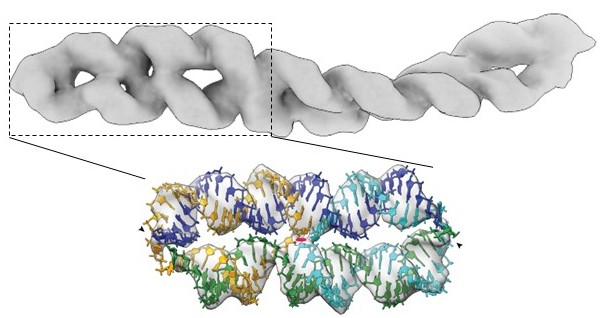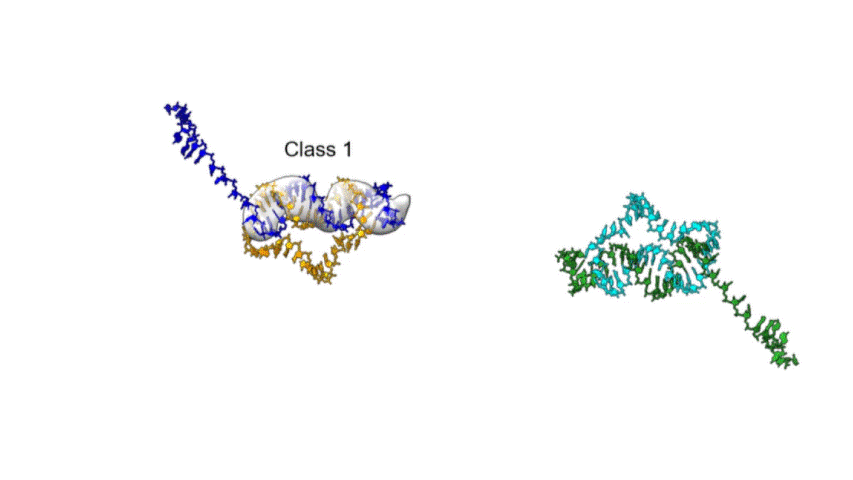Life’s Tiny Circles
Researchers from Aarhus University, in collaboration with scientists from the UK and USA, have studied how RNA circles can replicate through rolling-circle mechanisms and have identified new RNA superhelix complexes that may have played a role in the origin of life.
The most fundamental mechanisms of modern cells indicate that life originated from a single type of biomolecules—RNA. Based on this, scientists have theorized that life began in a so called “RNA world,” where RNA molecules not only stored genetic information but also performed the essential biochemical functions to sustain primordial life. Remarkably, many of today’s simplest lifeforms such as viruses and sub-viral systems still rely on RNA as their genetic material, and in some cases, even for performing essential biochemical functions. This makes these simple lifeforms valuable models for understanding life’s earliest evolutionary steps.
In a new article published in the journal Nucleic Acids Research, the research team investigated a key hypothesis about the origin of evolution: that it involved small, circular RNA molecules. Using cryogenic electron microscopy (cryo-EM), the researchers studied these RNA circles and discovered that they self-assemble into stable, filament-like RNA superhelices (see figure below). A superhelix is a structure in which one or more helices—in this case, RNA helices—twist around themselves to form a larger helix.

The study reveals how these novel superhelix complexes form through a coordinated rolling mechanism (see animation below), in which RNA strands interweave. This mechanism is reminiscent of rolling-circle replication, a process used by some viruses and sub-viral systems to copy their genetic material—often RNA. Notably, rolling-circle replication is one of the simplest and most efficient copying strategies found in nature and may have been central to the emergence of life.

These RNA superhelices represent a previously unrecognized structural state of circular RNA molecules and offer a new perspective for simple rolling-circle based replications that were likely relevant early on. Overall, the study provides compelling insights into how life may have emerged from simple molecular components and enhances our understanding of RNA’s role—not only in early evolution but also in contemporary biotechnology and medicine.
Related content:
About the study
Study type:
Experimental Molecular Biology
External funding:
The research was funded by Independent Research Fund Denmark (9040-00425B), Novo Nordisk Foundation (NNF21OC0070452), Canadian Natural Sciences and Engineering Research Council (532417), Carlsberg Foundation (CF20-0635, CF17-0809), Lundbeck Foundation (R250-2017-1502), Medical Research Council, as part of United Kingdom Research and Innovation (also known as UK Research and Innovation (UKRI)) (MC_U105178804), Volkswagen Foundation (96 755), Herchel Smith studentship (2017), and Marie Curie fellowship (H2020-MSCA-IF-2018-845303).
Conflicts of interest:
None declared.
Link to the scientific article:
https://doi.org/10.1093/nar/gkaf057
Emil L. Kristoffersen , Ewan K. S. McRae , Niels R. Sørensen , Philipp Holliger , Ebbe S. Andersen
Contact information:
Assistant Professor Emil Laust kristoffersen
Aarhus University
Interdisciplinary Nanoscience Center (iNANO)
Email: emillk@inano.au.dk
